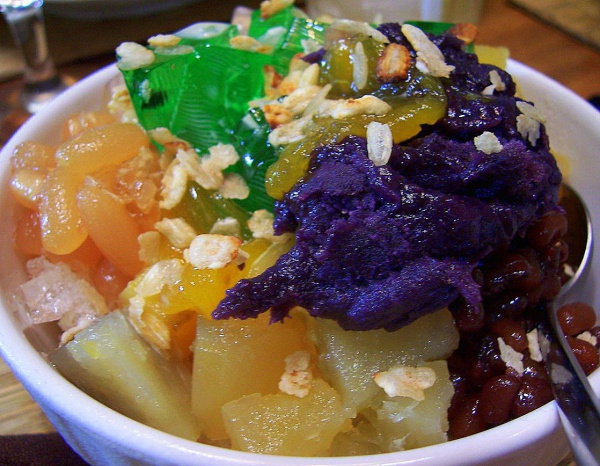Facts About Halo-halo
Halo-halo is a beloved Filipino cold dessert ideal for beating the heat. This vibrant treat is prepared with crushed ice, evaporated milk, and an array of delectable ingredients such as ube (purple yam), sweetened beans, coconut strips, sago (tapioca pearls), gulaman (agar jelly), pinipig (toasted young rice), fruit slices, flan, and ice cream. Its origins can be traced back to pre-war Japanese migrants, but it has since evolved to incorporate many native Filipino components.
While "halo-halo" is the widely accepted spelling, language experts propose "haluhalo" derived from the Tagalog word for "mixed."
There are numerous variations of halo-halo, each offering its unique twist. Some versions include sugar palm fruit, coconut sport, plantains, jackfruit, agar jellies, tapioca pearls, sweet potato, cheese, and pounded toasted young rice. Typically, the dessert is meticulously layered with fruits and sweets at the bottom, followed by shaved ice, and crowned with toppings like leche flan, ube halaya, or ice cream. A generous drizzle of evaporated milk ties everything together. Similarly, in the Visayas region, there's a comparable dessert called "ginataan" which is served warm in coconut milk.
Halo-halo has gained international acclaim, appearing on renowned TV shows such as "Top Chef" and "Anthony Bourdain: Parts Unknown." On "Top Chef" Filipino-American contestant Dale Talde impressed the judges with his take on halo-halo. Anthony Bourdain, during his visit to a Jollibee in Los Angeles, described the dessert as "oddly beautiful." It was also featured in an episode of "Bizarre Foods."
Replace inappropriately chosen words with more accurate terms
